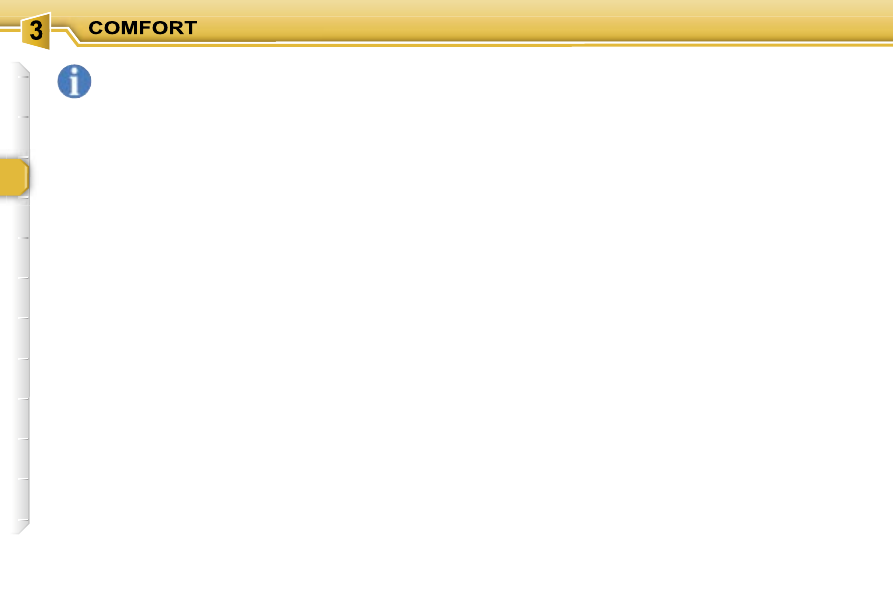Peugeot 307 Break (2007 year). Manual - part 4

48
In certain cases of particu-
larly arduous use (towing the
maximum load on a steep
gradient in high tempera-
tures), switching off the air condition-
ing permits the recovery of engine
power and therefore an increase in
the towing capacity.
In order for the air conditioning to be
fully effective, the windows must be
closed.
The air conditioning system does not
contain chlorine and does not present
any danger to the ozone layer.
Operate the air conditioning for 5 to
10 minutes, once or twice a month, to
keep it in good working order.
The water produced by the air con-
ditioning condensation is discharged
through an opening provided for this
purpose. Therefore, a puddle of wa-
ter may form underneath the vehicle
when stationary.
In order to ensure that the air con-
ditioning system operates correctly,
regular checks are also recommended.
If the system does not produce
cold air, do not use it and contact a
PEUGEOT dealer.